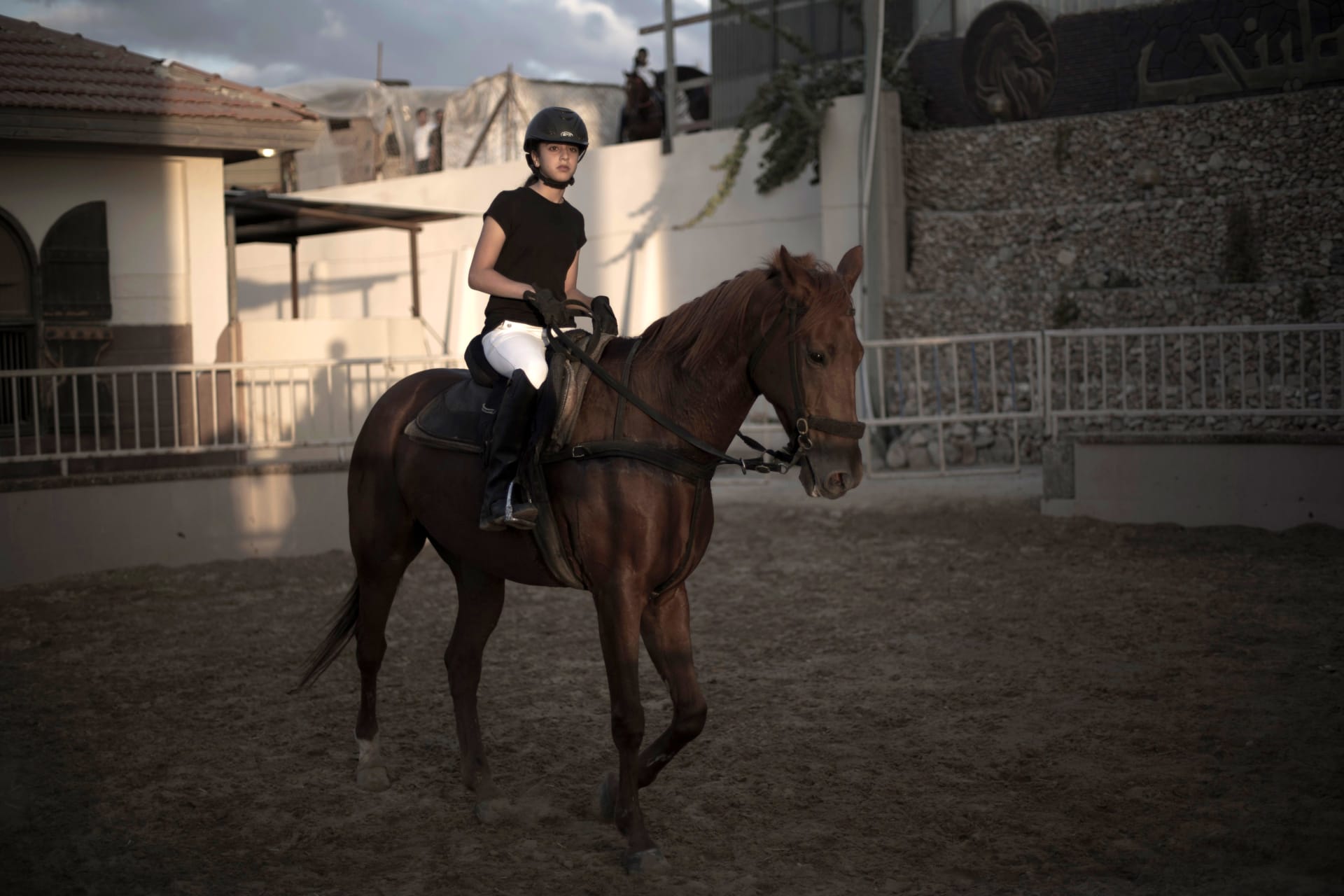دبي، الإمارات العربية المتحدة (CNN)-- الفروسية رياضة تحتاج إلى الكثير من الوقت والصبر للتعلم. وهناك العديد من الأخطاء التي قد يرتكبها الفارس الجديد بسبب قلة الخبرة أو الاندفاع. وفيما يلي، أبرز الأخطاء وطريقة تصويبها:
- رفع الذراعين عالياً: قد يبدو أمراً تلقائياً للفارس أن يرفع ذراعيه عالياً، لموازنة جسده على الحصان. هذا يجعله يفقد السيطرة على الحصان في حالة حصول أي حركة فجائية. ولتجنب هذه الغلطة، على الفارس موازنة وضعية جلوسه بشكل ثابت ومشدود قليلاً ووضع اليدين على مستوى الخصر.
- التشبث بالحصن بتضييق الأرجل من حوله: ركوب الخيل يعتمد على التوازن أكثر من التشبث بالحصان، ما يجعل عضلات الفارس غير متوترة وقابلة للحركة أكثر. قد يفهم الحصان التضييق عليه بأعلى أو أسفل الأرجل على أنه إشارة للحركة إلى الأمام، كما أن هذا التشبث متعب للفارس. ولتجنب هذا، على الفارس إرخاء رجليه من الوركين إلى أسفل القدمين، وإلقاء الثقل على القدمين.
- الوقوف على رأس أصابع القدمين: قد يقوم الفارس بالوقوف على رأس أصابعه عند رفع نفسه عن السرج أثناء الوثب، لكن هذا سيجعل الفارس عبئاً على الحصان لأنه سيجعله يرتد على السرج مرتين بشكل يزيد الثقل على الحصان، والنتيجة هي حركة غير متوازنة. وطريقة رفع الجسم المثلى في هذه الحالة هي بجعل القدمين تحت الجسم وكأن الفارس يقوم بالوقوف بشكل عادي، مع ثني الركبتين قليلاً. يجب على الفارس تعلم استعمال عضلات الجذع لموازنة جسمه، وليس قدميه.
- المبالغة في إدخال القدمين في الركبان: إدخال القدمين في الركبان كثيراً سيزعج الفارس، ويفضل الارتكازعلى الركبان في نقطة منتصف القدم. كما يجب الحرص على أن الركبان بطول مناسب، بحيث لا يتجاوز كاحل القدمين عند إرخائها بشكل كامل.
- إنحناء الظهر: تصعب السيطرة على الحصان والحفاظ على التوازن إذا كان جسم الفارس منحنياً ومرتخياً. ويجب على الفارس أن يجلس بطريقة مستقيمة دون توتر، وأن يبقي ذقنه مرفوعاً وأن ينظر إلى الطريق أمامه. المبالغة في إرجاع الكتفين إلى الوراء يسبب التوتر في جسم الفارس، لهذا يفضل الاستعاضة عن ذلك بالتنفس بعمق لتوسيع القفص الصدري.
- رفع الركبتين: يقوم الكثير من الفرسان المبتدئين برفع ركبتيهم عند ركوب الحصان، ما يجعلهم يبدون كأنهم يجلسون على كرسي. ويجب على الفارس إرخاء رجليه من الوركين إلى أسفل، والحفاظ على الخط المستقيم من الكتفين إلى القدمين.
- حبس النفس: قد يحبس الفارس نفسه أو ينسى التنفس بسبب التوتر المقترن بتعلم مهارات جديدة. لكنه يجب أن يسترخي وينظم إيقاع تنفسه مع خطوات الحصان.
- النظر إلى الحصان: قد يقوم الكثير من الفرسان المبتدئين بالنظر إلى الحصان، ما يشتت انتباههم عن الطريق أمامهم، ويجعلهم غير مستعدين لما قد يواجههم. بالإضافة إلى ذلك، عندما يحني الفارس رقبته ورأسه، يؤثر ذلك على استقامة عموده الفقري، ما يجعل حمله أمراً أكثر صعوبة على الحصان.
- شد العنان بقوة: شد العنان بقوة بدون سبب يُعد أمراً مزعجاً ومؤلماً أحياناً للحصان. أما تكراره قد يجعل الحصان يتجاهل شد العنان أو يرجع رأسه إلى الوراء لتجنب الضغط أو الألم. ويجب على الفارس تعلم إعطاء إشارة للحصان بدون سحب العنان، من خلال شد العنان باتجاه الأسفل بدل شده إلى الأعلى.
